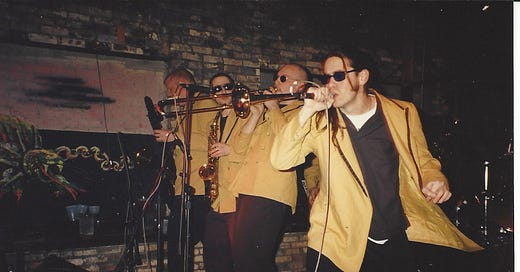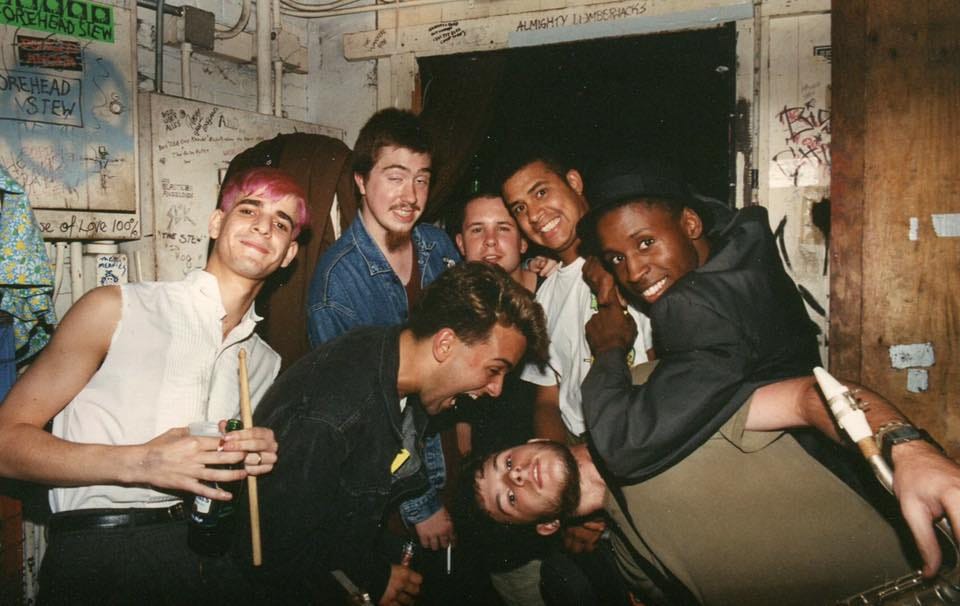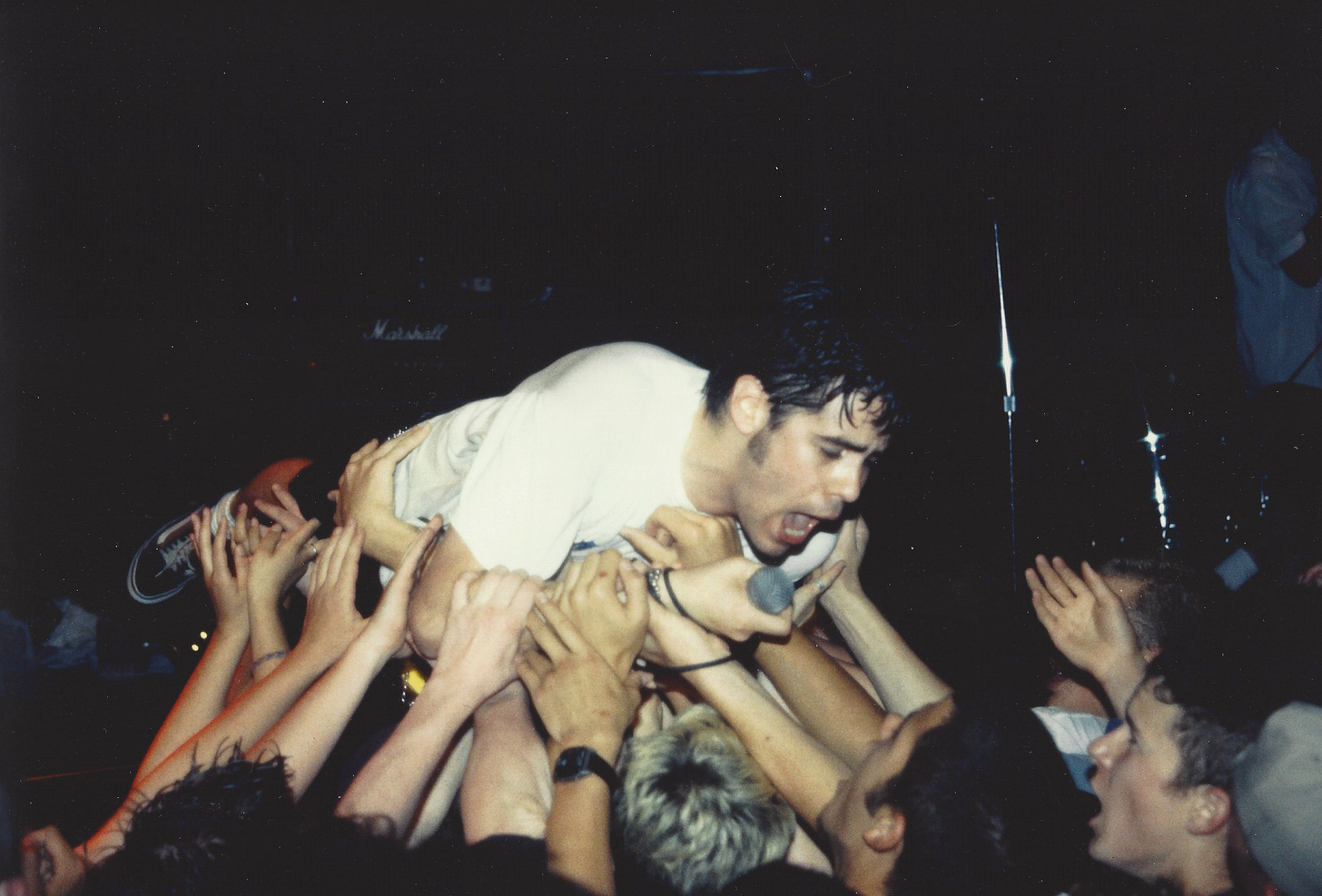Ska band Mustard Plug nearly scored a hit single in the ’90s
They said "Thanks, but no thanks."
Ska had reached its mainstream peak in 1997. That summer, a young VJ named Carson Daly, dressed in a too-large, Blues Brothers knockoff suit, hosted the embarrassing 2-hour special Skaturday. Surrounded by a parade of goofy ska dancers, Daly spouted off slightly incorrect ska history, while presenting the genre as the latest craze to grab a hold of the ever-fickle beast known as ‘youth culture.’ For anyone unfamiliar with ska, MTV’s brief rendezvous with ska presented the scene as silly dance music from Orange County where legions of ska kids dutifully dressed in plaid suits and Hawaiian shirts and ran in place till they passed out from lack of oxygen. Any tidbits about ska that dared contradict this narrow viewpoint were shaved off by major labels and tossed in the trash.
But while a half dozen bands represented ska to the masses, an entire parallel ska scene thrived in dingy, smoke-filled clubs. And rarely did these offbeat bands cross sides. Grand Rapids Mustard Plug—who mixed weird-80s-punk, alt-rock, and bouncy ska—nearly did, though entirely by accident. The only reason the band didn’t get swept up in the ska craze was because the members didn’t like how they were getting framed.
Back in the ’80s, ska trickled into the Midwest later than on the coasts. But once it did, people went bananas for it. By late-80s, chaotic-quasi-2-Tone-ska band Gangster Fun became the biggest band in Detroit—ska or otherwise. Into the early ’90s, they became several Midwest town’s surrogate ska bands, packing out venues and generally bringing a slightly dangerous vibe wherever they went, with frequent fights in the audience, magic tricks on stage, and ironic ska covers galore. “She Shook Me All Night” (AC/DC), “On The Road Again” (Bob Seger), and “Hungry Like A Wolf” (Duran Duran) were popular favorites.
Mustard Plug formed in 1991 in working-class Midwest city Grand Rapids at a time when hardly any of their peers knew about ska and the ones that did probably heard about it by stumbling into a Gangster Fun show. “There was 10 people familiar with it. We got most of those 10 people to join the band,” says Mustard Plug lead singer Dave Kirchgessner.
Like this post? Why not share it?
As the ’90s progressed, ska became huge in every Midwest town. Mustard Plug, along with MU330, Suicide Machines, and the Blue Meanies toured relentlessly, creating a scene that was as different between the bands as it was compared to either coast. Over on the east, jazz and traditional ska were common ingredients, while pop-punk and hardcore were more prominent elements on the west coast. In the Midwest, the bands tended to mix ska with literally anything, including ’70s rock ‘n’ roll. “Classic rock, that’s the background music to being in the Midwest,” says Dan Potthast from MU330.
By the mid-90s, Mustard Plug was playing over 200 dates a year, they had a record deal with Hopeless Records, and were hopeful they might be able to take things to the next level, just like Suicide Machines somehow managed to do in ’95 by singing to Hollywood.
Mustard Plug’s brush with fame came at a moment they least expected.
In 1997, as ska was being eaten up and spit out by corporations, a local radio station, WGRD, asked Mustard Plug to contribute a song to a benefit CD compilation they were putting together. A year earlier, local alt-rockers, The Verve Pipe had climbed the charts with the melodramatic hit single “The Freshman.” Mustard Plug thought it would be hilarious to submit a ska-punk rendition of “The Freshman” to WGRD. The station was constantly playing The Verve Pipe after all, so why not?
“In Grand Rapids, the Verve Pipe walked on water. So, we gave them [the station] a ska-punk version of this song that was sacred to them,” says Kirchgessner. “We weren’t sure how anyone was going to react. Would the station get pissed off? Would the band get pissed off?”
The radio station loved it. The original version is breathy, yearning, and teeters on grunge. Mustard Plug turned it into an upbeat sing-along ska song with a double-time punk rock chorus. Not only did the song translate well; it was better than the original. Mustard Plug sent their version to several radio stations on a CD that also had their original “You,” with hopes that DJs enticed by the wacky ska cover would check out the Mustard Plug original, which, by the way, is a great, catchy ska song, though not quite as pop-punk-friendly as Goldfinger or Reel Big Fish.
“The Freshman” found radio airplay in multiple markets, including several commercial rock stations. And interest was continuing to grow. But none of the DJs cared about “You.” Disappointing, but Mustard Plug sensed an opportunity. “The commercial stations were already receptive to ska covers. There was that Save Ferris version of ‘Come on Eileen.’ Reel Big Fish had ‘Take On Me,’” Kirchgessner says. Mustard Plug’s label, Hopeless Records, were eager to capitalize on the band’s sudden flirtation with radio success. But the band didn’t want to get famous off a ska cover.
So, what did Mustard Plug do? Nothing. Literally. They didn’t push the song. They didn’t put it on their album. They didn’t shoot a video for it. They didn’t even make it available as a single to be purchased. They let the moment pass through deliberate inactivity. “We would have been up for becoming more successful if it was our own music. With Save Ferris, I don’t think anyone can name any of their other songs. I’m not saying there is anything wrong with their music. They’ll always be known as that ska band that did that ‘Come On Eileen’ song. We were confident that’s what would have happened to us,” Kirchgessner says. “I still don't know if that was a good decision or not.”
If you’d like to read more posts, sign up for my newsletter
The interest “The Freshman” got from radio stations created not only a unique opportunity for the band to reach a larger audience, but a chance to show the MTV ska-consuming crowd what an important contribution the Midwest gave to American ska. It wasn’t just one band (The Suicide Machines) that made the Midwest special. Ska’s success in the ’90s was built off a vibrant national independent network. The Midwest’s role was substantial, allowing bands to string together full tours, and not just fly from coast to coast. And the Midwest crowds were eager for ska shows.
The radio-ready Orange County bands were the ones that got most of the MTV attention. This handful of mostly California bands didn’t reflect the geographically diverse nature of the ska scene. The Midwest had a particularly deep affection for ska and produced some of the best and most daring bands. They had little regard for what ska was supposed to look or feel like, and they broke a lot of the rules.
Even though the Skaturday ska dancers had no idea who Mustard Plug were, the band were stars to the kids in the parallel underground ska scene. And when all the MTV kids started making fun of ska in 1999, Mustard Plug continued unphased. In fact, Kirchgessner started the “Ska is Dead” tour in 2003 just to show them all that ska didn’t need popular culture to give its approval for large audiences to show up. And large crowds did indeed show up.





